Facilitating the protection and restoration of species and ecosystems at risk on BC’s South Coast
Inventory & Monitoring
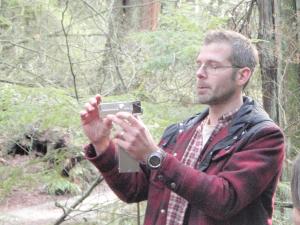
Why inventory and monitor species and ecosystems at risk? Without such activities we would be unable to determine the status of various species (how many there are, the health of individuals, breeding success etc.). This data is critical to improving management decisions.
It is also important to create a roadmap for identifying how or where the information you gather through monitoring is contributing or will contribute to relevant conservation actions. It is all well and good to go out and count amphibian egg masses, but if the data isn’t being shared, or you can’t provide an accurate breakdown of what species you are looking at your efforts, while enjoyable for you are not going to effectively contribute to helping the species you are working to conserve. For species and ecosystems at risk it is doubly important to ensure that efforts can be linked to recovery strategies or management plans to effectively contribute to their effectiveness. In the paper “Counting the books while the library burns: why conservation monitoring programs need a plan for action”. David B Lindenmayer and his co-authors write that there are three key aspects needed to ensure monitoring programs actually help conserve a species rather than just being so focused on collecting data that the species we are monitoring ends up winking out while we are busy collecting data on it. These attributes include: (1) explicit articulation of how monitoring information will inform conservation actions, (2) transparent specification of trigger points within monitoring programs at which strategic interventions will be implemented, and (3) rigorous quantification of the ability to achieve early detection of change.
As well, not all inventory and monitoring approaches are created equal. It is important to stay up to date and apply the most recent standards, protocols and approaches. While most citizen scientists will probably not be undertaking eDNA sampling or genome mapping as part of their day-to-day conservation efforts, these are examples of evolving technologies that are giving us new insights into the distribution, evolution and relationships between many of the species we are working to protect. Conversely, monitoring is also more than throwing a few minnow traps into a creek or wetland once in a while to see who is living there (though it is a fun and easy activity for many public programs!). Regulators are constantly refining field techniques and standards. Anyone investing time and resources into designing and implementing monitoring programs has an obligation to ensure they are familiar with the approaches, standards and approvals needed before heading out. This greatly increases the credibility of your efforts and likelihood the data will be useful. On this page we have tried to provide a toolbox to assist you as you begin your journey into inventory and monitoring.
Front Counter BC: FrontCounter BC provides a single point of contact service to assist you with licences, permits, registrations and other authorizations required to utilize the Province's natural resources. Relevant permits that are needed for most inventory and monitoring activities (which include sampling) are typically separated into fish and wildlife. These permits are required for work that involves the capture or sampling of species managed under provincial legislation and regulations.
Provincial Scientific Fish Collection Permit: A Fish Collection Permit is a document that authorizes an organization or individuals to capture and/or collect fish specimens for scientific and other non-recreational purposes. It is not used for general recreational angling or for commercial harvest of fish.
Provincial General Wildlife Permit: This application allows you to complete a general permit application for Fish and Wildlife permits that do not have a specific application form. For most people involved in conservation this will be either for the purposes of collecting dead wildlife (e.g. for research, education or display), or for live wildlife for Research/Scientific purposes (including salvage)
Fisheries and Oceans Canada Scientific Licenses (Coastal Pacific Region): Fisheries and Oceans Canada is responsible for the issuance of licences to harvest fish for experimental, scientific, educational or public display purposes. If you are a researcher, research institution or biological consultant and need to harvest fish for these purposes, you must have a Scientific Licence.
Federal Permit for wildlife: Undertaking an activity involving species listed under the federal Species at Risk Act (SARA) on federal lands, may require a SARA permit.
While applying for a license/permit may seem like a lot of red tape, it is first and foremost the law. It also is the right thing to do and helps ensure adequate accountability, proper animal welfare standards are being met, allows for tracking and reporting of who is doing collection, where and for what species. If you have not gone through the permiting process before and want to pursue sampling and collection as part of your monitoring project, connect and collaborate with a qualified environmental professional (QEP), post secondary environmental program (e.g. BCIT, UFV, SFU, UBC, Capilano, Kwantlen, Langara, Douglas) or staff from the relevant provincial or federal departments. Many South Coast First Nations are also involved in monitoring projects within their traditional territory or may be interested in partnerships.
Here is our roundup of monitoring and inventory resources picks (please also see links to provincial approaches and standards):
 Community Mapping Network Methods and Standards: From the recognized "Sensitive Habitat Inventory Methodology" to a "User Guide to Photopoint Monitoring Techniques for Riparian Areas (and everything in between!), the CMN is a great source of monitoring and inventory resources.
Community Mapping Network Methods and Standards: From the recognized "Sensitive Habitat Inventory Methodology" to a "User Guide to Photopoint Monitoring Techniques for Riparian Areas (and everything in between!), the CMN is a great source of monitoring and inventory resources.
 The Pacific Streamkeepers Federation Handbook & Modules: The Streamkeepers Handbook and Modules is designed as an easy to use resource for getting actively involved in your local stream and, is part of the Stewardship Series.
The Pacific Streamkeepers Federation Handbook & Modules: The Streamkeepers Handbook and Modules is designed as an easy to use resource for getting actively involved in your local stream and, is part of the Stewardship Series.
 BCWF Wetlands Education: The Wetlandkeepers Handbook provides supplementary information on wetland ecology and laws related to wetlands, as well as a step-by-step instruction on wetland activities. *Due to changes in legislation and governing bodies over the years, the Wetlandkeepers handbook contains sections that are out of date. Consequently, the BCWF no longer sells hard copies and does not use it as the basis for their Wetlandkeepers workshops. However it still contains some great information!
BCWF Wetlands Education: The Wetlandkeepers Handbook provides supplementary information on wetland ecology and laws related to wetlands, as well as a step-by-step instruction on wetland activities. *Due to changes in legislation and governing bodies over the years, the Wetlandkeepers handbook contains sections that are out of date. Consequently, the BCWF no longer sells hard copies and does not use it as the basis for their Wetlandkeepers workshops. However it still contains some great information!
 Seagrass Conservation Working Group: The SCWG is a consortium of community and conservation groups, First Nations, government agencies, researchers, consultants and students. We work to conserve and restore the ecological integrity of seagrass and other nearshore ecosystems in British Columbia by promoting research, inventories, communication and partnerships.
Seagrass Conservation Working Group: The SCWG is a consortium of community and conservation groups, First Nations, government agencies, researchers, consultants and students. We work to conserve and restore the ecological integrity of seagrass and other nearshore ecosystems in British Columbia by promoting research, inventories, communication and partnerships.
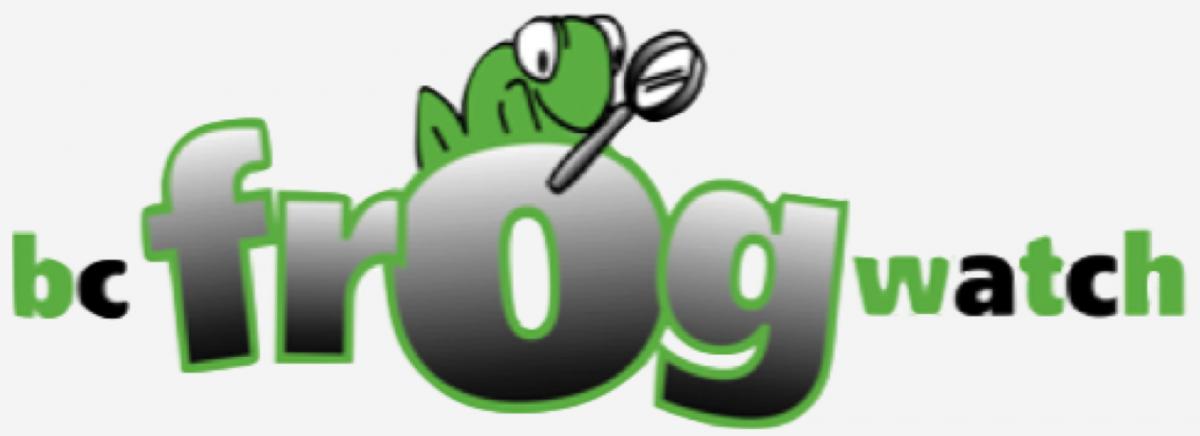 BC Frogwatch Program: Whether you have scientific training or not, help gather and share scientific data about amphibians in B.C.
BC Frogwatch Program: Whether you have scientific training or not, help gather and share scientific data about amphibians in B.C.
 BC Forest Research Program Publications - Coast Region: The Coast Region Research GroupWildlife Publications is an archive of reports and protocols applied by the Province of BC to assess and monitor a number od species at risk, many of which are found on the South Coast.
BC Forest Research Program Publications - Coast Region: The Coast Region Research GroupWildlife Publications is an archive of reports and protocols applied by the Province of BC to assess and monitor a number od species at risk, many of which are found on the South Coast.
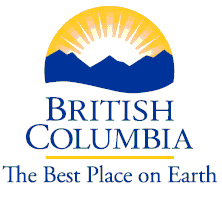 Government of British Columbia Research, Monitoring & Reporting Portal and Cumulative Effects Framework: Sharing key scientific and technical information is an important part of monitoring and managing our natural resources. The cumulative effects framework is a set of policies, procedures and decision-support tools that helps identify and manage cumulative effects consistently and transparently across British Columbia's natural resource sector.
Government of British Columbia Research, Monitoring & Reporting Portal and Cumulative Effects Framework: Sharing key scientific and technical information is an important part of monitoring and managing our natural resources. The cumulative effects framework is a set of policies, procedures and decision-support tools that helps identify and manage cumulative effects consistently and transparently across British Columbia's natural resource sector.
 Canadian Aquatic Biomonitoring Network: The made in Canada approach for measuring freshwater ecosystem health with standardized methods, database, activities map and training.
Canadian Aquatic Biomonitoring Network: The made in Canada approach for measuring freshwater ecosystem health with standardized methods, database, activities map and training.
 Bird Studies Canada: Bird Studies Canada conserves wild birds through sound science, on-the-ground actions, innovative partnerships, public engagement, and science-based advocacy. BSC has a number of monitoring and survey protocopils and guides including waterbirds, songbirds and aerial insectivores as well as various habitat and nest monitoring.
Bird Studies Canada: Bird Studies Canada conserves wild birds through sound science, on-the-ground actions, innovative partnerships, public engagement, and science-based advocacy. BSC has a number of monitoring and survey protocopils and guides including waterbirds, songbirds and aerial insectivores as well as various habitat and nest monitoring.
 Partners in Flight - North American Bird Conservation Initiative: In Canada, Partners in Flight functions as one of the four pillars of the North American Bird Conservation Initiative in Canada (the others are the initiatives for waterfowl, waterbirds and shorebirds) rather than as a stand-alone program. NABCI Canada coordinates the efforts of partners to protect, restore and enhance bird populations and habitats.
Partners in Flight - North American Bird Conservation Initiative: In Canada, Partners in Flight functions as one of the four pillars of the North American Bird Conservation Initiative in Canada (the others are the initiatives for waterfowl, waterbirds and shorebirds) rather than as a stand-alone program. NABCI Canada coordinates the efforts of partners to protect, restore and enhance bird populations and habitats.
 Seagrass Watch (international): Manual for Mapping & Monitoring Seagrass Resources by Community (citizen) volunteers.
Seagrass Watch (international): Manual for Mapping & Monitoring Seagrass Resources by Community (citizen) volunteers.
 Pacific Northwest Aquatic Monitoring Partnership (US): PNAMP is a forum for the community of aquatic monitoring practitioners in the Pacific Northwest. PNAMP consists of federal, tribal, and state partners; other interested participants; and a coordinating staff.
Pacific Northwest Aquatic Monitoring Partnership (US): PNAMP is a forum for the community of aquatic monitoring practitioners in the Pacific Northwest. PNAMP consists of federal, tribal, and state partners; other interested participants; and a coordinating staff.
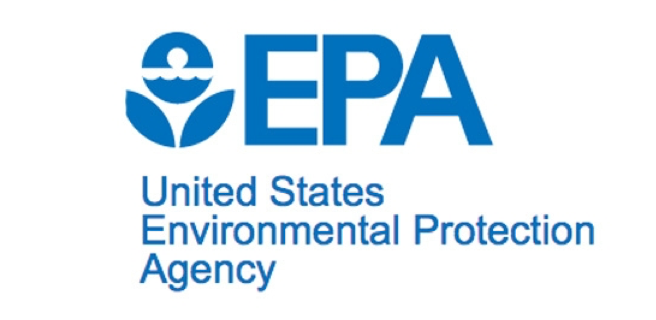 Volunteer Estuary Monitoring: A Methods Manual (US EPA): Developed as part of the National Estuary Program by the US Environmental Protection Agency, this manual "aids in understanding estuaries, what makes them unique, the problems they face, and the role of humans in solving the problems. The manual explains how to establish and maintain a volunteer monitoring program, as well as working effectively with volunteers and ensuring their safety".
Volunteer Estuary Monitoring: A Methods Manual (US EPA): Developed as part of the National Estuary Program by the US Environmental Protection Agency, this manual "aids in understanding estuaries, what makes them unique, the problems they face, and the role of humans in solving the problems. The manual explains how to establish and maintain a volunteer monitoring program, as well as working effectively with volunteers and ensuring their safety".
 Tidal Marsh Monitoring (USGS): Developed through a partnership with US federal and state agencies and tribes, this project's objective "is to provide an online monitoring handbook for tidal marsh restoration practitioners "on the ground" conducting tidal marsh restoration monitoring."
Tidal Marsh Monitoring (USGS): Developed through a partnership with US federal and state agencies and tribes, this project's objective "is to provide an online monitoring handbook for tidal marsh restoration practitioners "on the ground" conducting tidal marsh restoration monitoring."
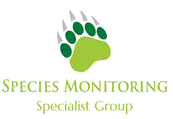 IUCN SSC Species Monitoring Specialist Group: The IUCN Species Survival Commission Species Monitoring Specialist Group "aims to enhance biodiversity conservation by improving the availability and use of data on species populations, their habitats and threats."
IUCN SSC Species Monitoring Specialist Group: The IUCN Species Survival Commission Species Monitoring Specialist Group "aims to enhance biodiversity conservation by improving the availability and use of data on species populations, their habitats and threats."
 Bumble Bee Watch: Bumble Bee Watch is a collaborative effort to track and conserve North America’s bumble bees. See also the Xerces Society's Streamlined Bee Monitoring Protocol
Bumble Bee Watch: Bumble Bee Watch is a collaborative effort to track and conserve North America’s bumble bees. See also the Xerces Society's Streamlined Bee Monitoring Protocol
 Migratory Dragonfly Partnership: To better understand and conserve North America's dragonfly migration, dragonfly experts, nongovernmental programs, academic institutions, and federal agencies from the United States, Mexico, and Canada have formed the collaborative Migratory Dragonfly Partnership (MDP).
Migratory Dragonfly Partnership: To better understand and conserve North America's dragonfly migration, dragonfly experts, nongovernmental programs, academic institutions, and federal agencies from the United States, Mexico, and Canada have formed the collaborative Migratory Dragonfly Partnership (MDP).

